Incline Bench Press Mistakes to Avoid & Fixes
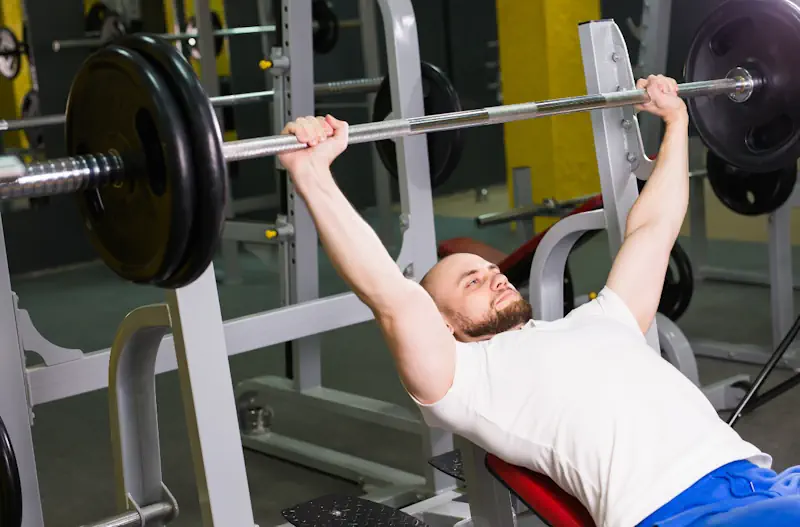
What's In This Article
- What muscles does the incline bench press target?
- Key Highlights
- Introduction
- What is the Incline Bench Press
- Benefits of Incorporating the Incline Bench Press
- Key Mistakes to Avoid in the Incline Bench Press
- Technical Fixes for Common Mistakes
- Advanced Tips to Enhance Your Incline Bench Press
- Conclusion
- Frequently Asked Questions
What muscles does the incline bench press target?
The incline bench press primarily targets the upper chest, shoulders, and triceps. By adjusting the bench to an incline position, you shift more of the workload onto the upper chest muscles than in a flat bench press, helping develop a well-rounded chest and shoulder strength.
Key Highlights
- The incline bench press is a variation of the bench press that targets the upper chest muscles and provides a greater range of motion.
- Proper form is crucial to avoid injury and maximize muscle activation.
- Common mistakes in the incline bench press include incorrect bench angle setup, improper wrist position, neglecting scapular retraction, and excessive weight.
- It is important to adjust the bench angle for optimal performance, focus on wrist stabilization, emphasize scapular retraction, and determine the right weight for your level to fix these mistakes.
- Incorporating accessory exercises and paying attention to tempo and volume can further enhance your incline bench press performance.
- FAQs: The ideal angle is between 30 and 45 degrees. It can complement but not replace the flat bench press. The frequency of performing the press depends on your training program and muscle recovery. Breaking through plateaus requires adjustments in progression and muscle activation.
Introduction
The incline bench press is a popular exercise for targeting the upper chest muscles and improving overall upper body strength. It is a variation of the traditional bench press that involves performing the exercise on an incline bench, which changes the angle of the movement and shifts the emphasis to the upper chest muscles. In addition to targeting the chest, it also activates the shoulders and triceps, making it a compound exercise that works multiple muscle groups simultaneously at different angles.
Understanding the proper form and technique is essential to maximize its benefits and avoid common mistakes leading to injury or ineffective workouts. In this blog, we will explore the key highlights of the incline bench press, including its benefits, muscles targeted, and common mistakes to avoid. We will also provide fixes and technical adjustments for these mistakes and advanced tips to enhance your performance. Whether you are a beginner or an experienced lifter, this blog will provide you with the knowledge and tools to make the most out of your workouts.
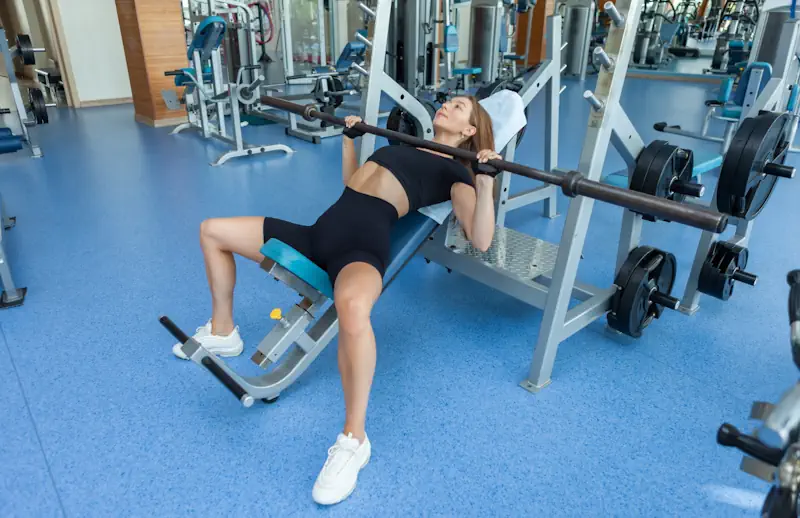
What is the Incline Bench Press
The incline bench press is a variation that involves performing the movement on an incline. This changes the angle of the exercise and targets the upper chest muscles to a greater extent. One of the many variations of the incline barbell bench press offers a wider range of motion than the flat bench press, allowing for increased muscle activation and development in the upper chest. It is a compound exercise that engages the shoulders and triceps, making it an essential variation for a well-rounded chest workout.
Defining the Incline Bench Press
The incline bench press is a variation of the traditional bench press exercise that involves moving on an incline bench. This changes the angle of the exercise and shifts the emphasis to the upper chest muscles, making it a great exercise for increasing chest strength. To perform the incline, you position yourself on an incline bench with your feet firmly planted on the ground. You then grip the barbell with an overhand grip slightly wider than shoulder-width. From this starting position, you lower the barbell towards your upper chest and then press it back up to the starting position, ensuring proper form and control throughout the movement. It primarily targets the upper chest muscles but also engages the shoulders, triceps, and other upper body muscles, making it a compound exercise that provides a comprehensive upper body workout. The incline dumbbell press is a great variation to incorporate into your workout routine to add variety and target different muscle groups.
Muscles Targeted by the Incline Bench Press
The incline bench press is a highly effective exercise for targeting the chest, shoulders, and triceps muscles. It primarily targets the upper chest muscles, the clavicular head of the pectoralis major, and the serratus anterior muscles. This muscle group is responsible for developing a full and well-defined upper chest, often desired for aesthetic reasons. In addition to the upper chest, the movement engages the anterior deltoids (front shoulders) and triceps, providing a comprehensive upper body workout. Its press can be performed with dumbbells, known as the dumbbell incline press, which requires more stability and single-arm strength than the barbell version.
The incline bench press involves the movement of the shoulder joint, which activates the shoulder girdle muscles, including the deltoids and rotator cuff muscles. The triceps brachii, located on the back of the upper arm, are also engaged during the pressing motion of the incline bench press. Overall, the press targets multiple muscle groups in the upper body, including the triceps brachii, making it an efficient exercise for building strength and muscle mass.
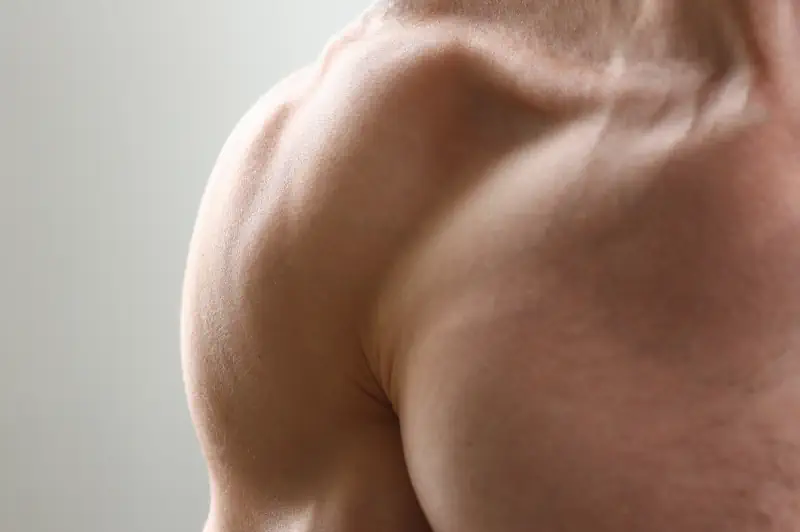
Benefits of Incorporating the Incline Bench Press
Incorporating the incline bench press into your workout routine offers several benefits for your upper body development. One of the main benefits is the increased activation and development of the upper chest muscles, including the clavicular head of the pectoralis major and the front delts. It targets the clavicular head, also known as the upper portion of the chest, which is responsible for the fullness and definition of the upper chest. The movement press also engages the front delts, helping to create a well-rounded and aesthetically pleasing chest.
In addition to upper chest development, the incline press promotes overall muscle hypertrophy and growth in the upper body. The exercise engages multiple muscle groups, including the shoulders and triceps, leading to increased muscle activation and stimulation. This can improve strength and muscle size in the upper body, enhancing functional performance and aesthetic appearance.
Enhancing Upper Chest Development
The incline bench press is highly effective for enhancing upper chest development. This exercise specifically targets the clavicular head of the pectoralis major, which is responsible for the aesthetically pleasing fullness and roundness of the upper chest. You can stimulate muscle hypertrophy in this area by performing the movement with proper form and technique, leading to increased muscle size and definition. Incorporating the incline press into your chest workout routine regularly can help you achieve a well-developed and balanced upper chest, contributing to a more impressive physique.
Improving Shoulder Stability and Posture
In addition to targeting the chest muscles, the incline press improves shoulder stability and posture. This exercise engages the muscles surrounding the shoulder blades and the shoulder joint, promoting proper alignment and reducing the risk of shoulder injuries. By strengthening the muscles responsible for shoulder stability, such as the rotator cuff muscles, the movement helps maintain proper posture and prevents the development of forward-rounded shoulders. Good posture enhances your appearance and contributes to overall health and well-being, especially when performing overhead work or incline exercises. Including the incline press in your training routine can improve upper body strength and posture, leading to a more confident and healthy physique.
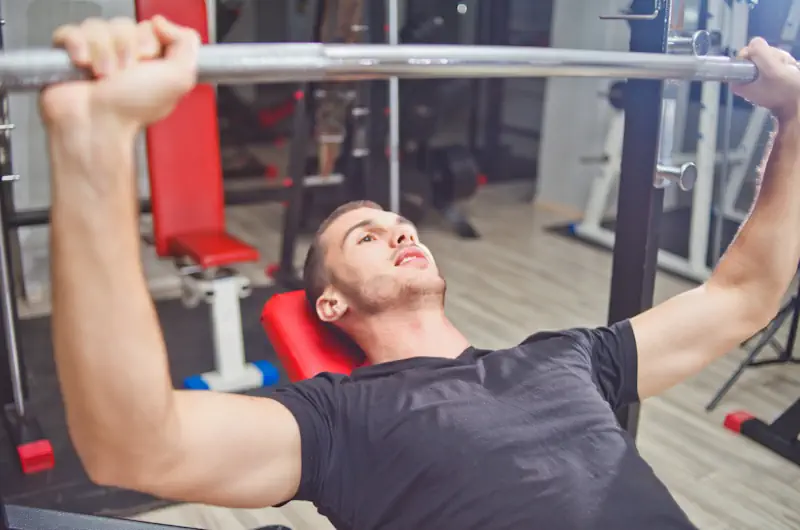
Key Mistakes to Avoid in the Incline Bench Press
While the incline press is a highly effective exercise, there are key mistakes that individuals often make. These mistakes can hinder progress, increase the risk of injury, and prevent the full benefits of the exercise. Some common mistakes to avoid include incorrect bench angle setup, failing to maintain proper wrist position, neglecting scapular retraction, and using excessive weight. By understanding and addressing these mistakes, you can ensure proper form and technique, maximize the benefits, and reduce the risk of injury during your incline press workouts.
Incorrect Bench Angle Setup
One of the key mistakes to avoid is incorrect bench angle setup. The angle is crucial for effectively targeting the upper chest muscles and maintaining proper form throughout the exercise. The recommended angle is between 30 and 45 degrees. Setting the bench at a higher angle shifts the emphasis away from the chest and onto the shoulders, while setting it at a lower angle may not engage the upper chest muscles as effectively. To ensure proper angle setup, start by adjusting the bench to the desired angle and positioning yourself so that your upper back and hips are firmly pressed into the bench. This starting position will provide a stable base and allow you to perform the exercise with optimal form and muscle activation.
Failing to Maintain Proper Wrist Position
Another common mistake in the incline bench press is failing to maintain proper wrist position. Proper wrist stabilization is essential for maximizing force production and minimizing the risk of injury. During the exercise, your wrists should be neutral, stacked directly over your elbows. This alignment allows for a strong and stable grip on the barbell or dumbbells, ensuring optimal force transfer from the upper body to the weights. To achieve and maintain proper wrist position, focus on keeping your wrists straight throughout the movement and avoid excessive flexion or extension. By prioritizing proper wrist stabilization, you can perform the exercise with improved form, reduce the risk of wrist strain or discomfort, and enhance the effectiveness of the exercise.
Neglecting Scapular Retraction
Neglecting scapular retraction is another key mistake to avoid in the incline press. Scapular retraction refers to squeezing your shoulder blades together, which helps stabilize the shoulder joint and maintain proper form throughout the exercise. When performing the movement, it's important to focus on initiating the movement by retracting your shoulder blades and maintaining this position throughout the entire range of motion. Neglecting scapular retraction can lead to poor form, decreased muscle activation, and an increased risk of shoulder injuries. By prioritizing scapular retraction in the incline bench press, you can improve shoulder stability, enhance muscle activation in the chest and shoulders, and perform the exercise with the proper form and technique.
Using Excessive Weight
Using excessive weight is another common mistake to avoid. While it's important to challenge yourself with an appropriate amount of weight, using heavier weights can compromise your form, increase the risk of injury, and limit the effectiveness of the exercise. Selecting a weight that allows you to perform the incline press with proper form and technique throughout the entire range of motion is essential. If you cannot maintain proper form or feel excessive strain or discomfort, it's a sign that the weight is too heavy. By using an appropriate weight, you can ensure proper muscle activation, reduce the risk of injury, and achieve optimal results from your workouts.
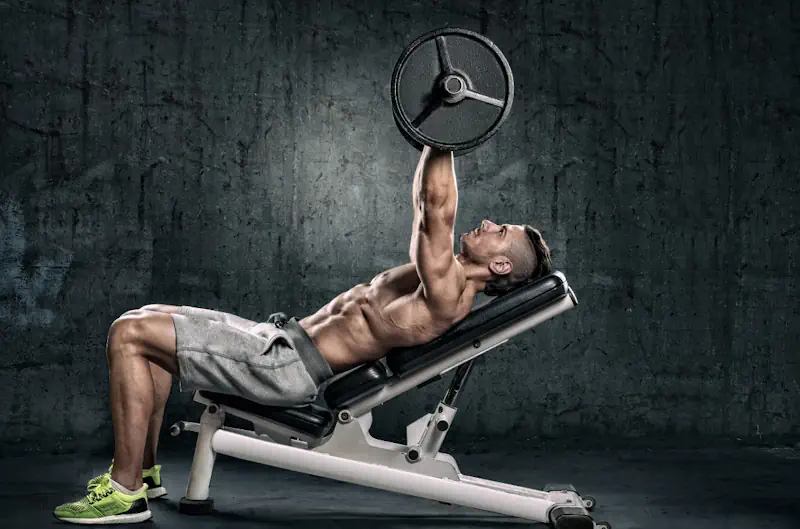
Technical Fixes for Common Mistakes
Specific technical fixes can be implemented to address the common mistakes in the incline press. These fixes focus on improving form and technique to maximize the exercise's benefits and reduce the risk of injury. Some technical fixes include adjusting the bench angle for optimal performance, techniques for wrist stabilization, focusing on scapular retraction, and determining the right weight for your level. By implementing these technical fixes, you can ensure proper form, enhance muscle activation, and improve overall performance.
Adjusting the Bench Angle for Optimal Performance
One of the technical fixes for the common mistake of incorrect angle setup is adjusting the angle of the bench for optimal performance. As mentioned earlier, the recommended angle is between 30 and 45 degrees, with many experts citing 30 degrees as the best angle for targeting the pecs to a greater degree. This is based on a 2020 study published in the International Journal of Environmental Research and Public Health, which found that this angle resulted in weightlifters' highest pectoral muscle activation. Adjusting to this range ensures that the exercise effectively targets the upper chest muscles and maintains proper form throughout the movement. Use the built-in adjustment mechanism to adjust the angle or choose an incline bench for easy angle changes. By selecting the appropriate bench angle, you can optimize muscle activation, reduce stress on the shoulder joints, and perform the movement with optimal form and technique.
Techniques for Wrist Stabilization
Specific wrist stabilization techniques can be employed during the incline press to address the common mistake of failing to maintain proper wrist position. Proper wrist stabilization is essential for maintaining proper form, maximizing force production, and reducing the risk of injury. One technique is keeping your wrists straight throughout the movement, avoiding excessive flexion or extension. Another technique is to grip the barbell or dumbbells with a neutral grip, aligning your wrists with your elbows. By implementing these techniques for wrist stabilization, you can perform the movement with improved form, enhance force production, and minimize the risk of wrist strain or discomfort.
Importance of Scapular Retraction and How to Achieve It
To address the common mistake of neglecting scapular retraction, it's important to understand the importance of scapular retraction and how to achieve it during the incline bench press. Scapular retraction refers to squeezing your shoulder blades together, which helps stabilize the shoulder joint and maintain proper form throughout the exercise. Achieving scapular retraction involves focusing on initiating the movement by retracting your shoulder blades and maintaining this position throughout the entire range of motion. This can be achieved by consciously squeezing your shoulder blades together and maintaining tension in the upper back muscles. By prioritizing scapular retraction, you can enhance shoulder stability, improve muscle activation in the chest and shoulders, and perform the incline press with the proper form and technique.
Determining the Right Weight for Your Level
It's important to determine the right weight for your level to address the common mistake of using excessive weight. Using appropriate weight is crucial for maintaining proper form, optimizing muscle activation, and reducing the risk of injury. The right weight for your level should allow you to perform the exercise with proper form and technique throughout the entire range of motion. It should challenge you without compromising your ability to maintain proper form. If you're unsure about the right weight for your level, start with a lighter weight and gradually increase it as you become more comfortable and confident in your form. Determining the right weight for your level can ensure an effective and safe workout.
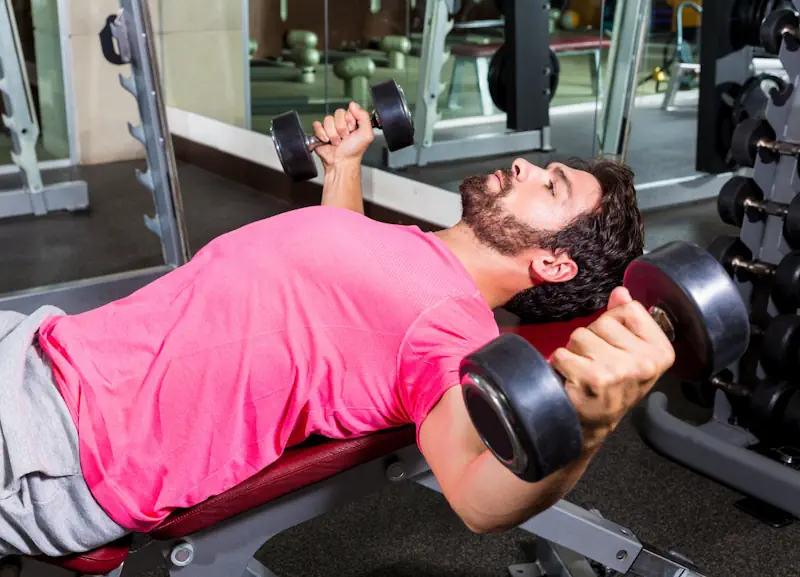
Advanced Tips to Enhance Your Incline Bench Press
For those looking to take their incline bench press to the next level, there are advanced tips that can enhance your performance and results. These tips focus on maximizing muscle activation, increasing the range of motion, and optimizing your training program. One advanced tip is incorporating accessory exercises targeting chest and shoulder muscles, such as dumbbell flyes and shoulder presses. Another tip is manipulating tempo and volume in your training program, incorporating slower eccentric (lowering) phases and higher overall volume to stimulate muscle growth and strength gains. By implementing these advanced tips, you can elevate your incline press and achieve greater muscle activation, increased range of motion, and improved overall performance.
Incorporating Accessory Exercises
To enhance your performance, it can be beneficial to incorporate accessory exercises that target the chest and shoulder muscles. Accessory exercises, also known as assistance exercises, are additional exercises that complement the main exercise and help strengthen specific muscle groups involved in the movement. Some examples of accessory exercises for the incline bench press include dumbbell flyes, pullovers, and shoulder presses. These exercises target the chest, shoulder, and triceps muscles, providing additional stimulus and enhancing overall upper body strength and muscle development. By incorporating accessory exercises into your training program, you can target specific muscle groups, improve muscle imbalances, and enhance performance.
Role of Tempo and Volume in Progression
Tempo and volume play a significant role in the progression of your incline press performance. Tempo refers to the speed at which you perform each repetition, including the eccentric (lowering) and concentric (lifting) phases. By manipulating tempo, such as slowing down the eccentric phase and focusing on controlled movements, you can increase the time under tension and stimulate greater muscle growth and strength gains. Volume, or the total number of sets and reps performed in a workout, is also crucial in building muscle strength. According to scientific studies, longer rest periods between sets can enhance muscle strength and hypertrophy in resistance-trained men. You can improve your performance by gradually increasing the volume and incorporating longer rest periods into your training.
Conclusion
Mastering the movement requires precision and technique. Understanding the targeted muscles, avoiding common mistakes, and implementing technical fixes are key to achieving optimal performance and results. Enhance your upper chest development, shoulder stability, and posture with the correct bench angle setup, wrist positioning, and scapular retraction. You can break through plateaus and progress efficiently by incorporating advanced tips like accessory exercises and focusing on tempo and volume. Remember, consistency and proper form are paramount in maximizing the benefits of the incline bench press. Engage in this exercise with dedication and attention to detail for a stronger, well-defined upper body.
Frequently Asked Questions
What is the ideal angle for an incline bench press?
The ideal angle for an incline press is between 30 and 45 degrees. This angle effectively targets the upper chest muscles while maintaining proper form and minimizing stress on the shoulder joints. Adjust the bench to the desired angle and position yourself with your upper back and hips firmly pressed into the bench for optimal performance.
Can incline bench press replace the flat bench?
While it is valuable for targeting the upper chest muscles, it should not replace the flat bench press in your training routine. Both exercises offer unique benefits and target different muscle groups. Incorporating incline and flat presses, along with other variations, can provide a well-rounded chest workout and promote overall muscle development.
How often should I perform the incline bench press?
The frequency at which you should perform the incline depends on your training program and muscle recovery abilities. As a general guideline, aim to include the incline bench press in your chest workout routine 1-2 times per week, allowing sufficient time for muscle recovery between sessions. Adjust the frequency based on your goals, abilities, and recovery needs.
Tips for breaking through plateaus in incline bench press performance
To break through plateaus in your performance, consider implementing various strategies. These may include adjusting the weight, changing the number of sets and reps, incorporating different variations, manipulating tempo and volume, and focusing on proper muscle activation. By continually challenging yourself and progressing in your training program, you can overcome plateaus and continue to make progress with your incline bench press.